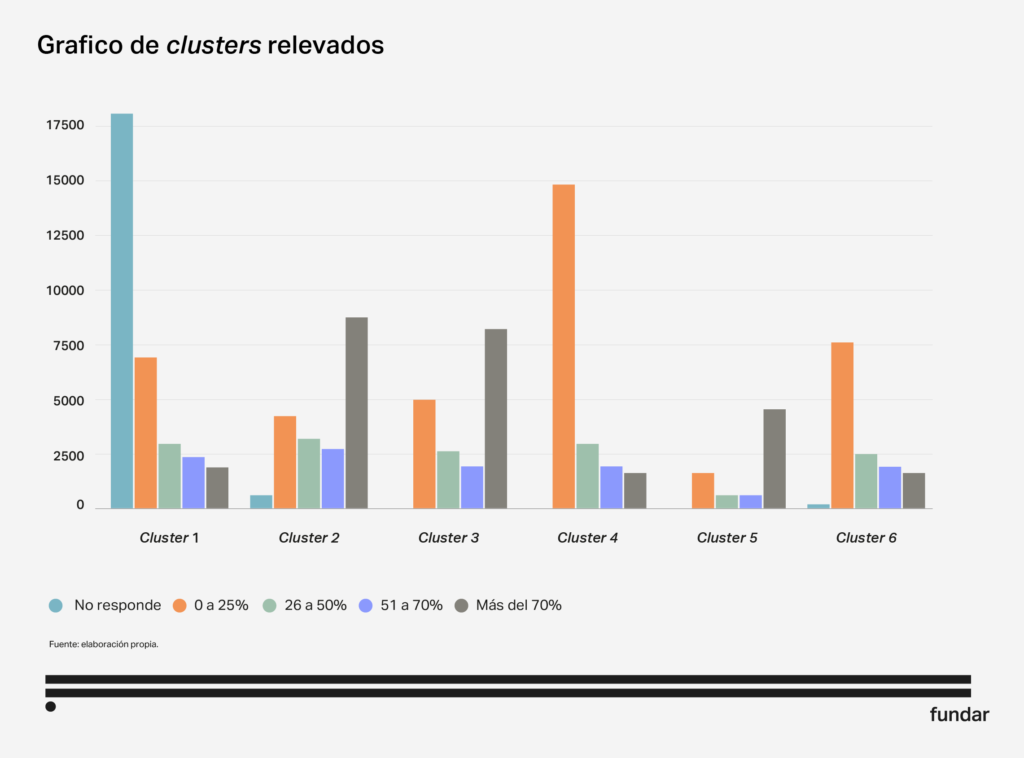The use of administrative records is a very common tool in Public Administration: it allows citizens to register for programs, apply for subsidies and facilitates interaction between citizens and the State. The data thus obtained, along with the advances in technology and machine learning algorithms, paves the way for innovative analyses to provide public policy-makers with information and tools. The purpose of this guide is to provide general recommendations for any such project: how to design a tool to construct the target population of a given government body based on administrative records?
To this end, we describe the collaborative experience between Fundar’s Data Area and the Directorate of Policy Planning and Monitoring of the Ministry of Culture, through which we sought to identify useful tools for characterizing the target population of cultural policies.
The method used was a cluster analysis, which consisted in dividing the population under study into 6 groups with different characteristics, indicating different profiles. This guide provides a step-by-step explanation of the method used, which may be easily replicated and applied to other cases where a profile analysis is desired.
A cluster analysis of the database with information on individuals allows the identification of different groups and profiles based on the existing data. This tool has been widely used in marketing and commercialization for audience and customer segmentation. This guide is intended to expand its use to analyze and learn more about the population targeted by a public policy, or for other cases such as impact assessment.


